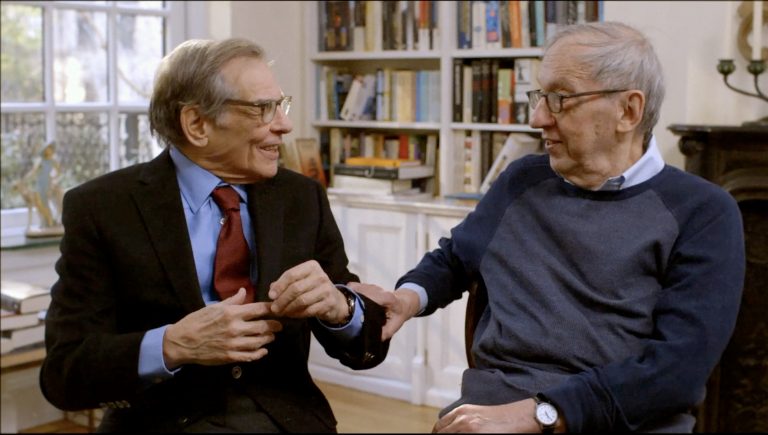Origin, directed by Oscar-nominated U.S. filmmaker Ava DuVernay, tackles the difficult task of exposing the hierarchical and unequal structure at the heart of human society. Once again, the director reprises themes already established as her areas of interest, particularly the denunciation of the discrimination to which Black communities in the United States are still subjected. It is unfortunate how, despite the attempt to convey an important message, the discourse set by the movie comes across as trite, superficial, and specious.
DuVernay’s feature is inspired by the life of Pulitzer Prize-winning author and journalist Isabel Wilkerson, who is the film’s protagonist. In particular, the film focuses on the research and thought process that led her to write the renowned essay ‘Caste: The Origins of Our Discontents,’ whose main theses DuVernay attempts to report. ‘Caste: The Origins of Our Discontents’ is a humanitarian inquiry aimed at discussing the actual origin of the still too-deep discrimination against African Americans in America. Published in 2020, the book rereads U.S. racism as part of a more extensive hierarchical, caste-based social stratification system. It links, starting with the case of the Trayvon Martin murder in 2012, the institutionalization of inferiority in 1950s America (at the time of the Jim Crow laws), in Nazi Germany, and the caste pyramid of modern India.
Origin’s thesis, based on the connectivity of all oppressive systems and the substitution of the discourse of racism for that of casteism, is certainly interesting. Considering how the caste system is based on the segmentation of social groups with memberships decided predominantly by right and birth characteristics, the perspective of the system as a catalyst of social evil is a timely and worthy discourse. However, the film’s approach remains simplistic and trivializing, glossing over both the unique characteristics of each case and the eventual limitations of the thesis. Although the connection found by Wilkerson is intriguing, the limitation of the sample, at least in the movie, makes its choice appear partially aleatory.
In addition, even while not talking about racism, DuVernay appears to equate caste with race, ignoring the other elements and characteristics underlying the invisible classification of subjects in modern society (such as family heritage and economic status, sexual orientation, gender, religious beliefs, and other social discriminations). As undeniable as it is that the issue of race is still rampant in American collective conscience, the film nevertheless appears to be an oversimplification of a highly complex reality.
Moreover, instead of directly adapting the essay into documentary form, DuVernay focuses on its writing process, transposing to the simultaneous family drama of the protagonist. An unwise choice given the little complementarity of the two sections, which appear as belonging to two different films, and despite its attempt to position itself between being a docu-fiction and a family drama, Origin fails to render both of its storylines. Most importantly, by choosing to tie the thesis of Wilkerson’s book with the protagonist’s personal tragedies in a double-stranded fashion, the film is almost blackmailing in stimulating easy emotions in the viewer.

The protagonist, Isabel Wilkerson, is played by Aunjanue Ellis, who, while convincing in the role, suffers from extremely one-dimensional character writing. In a characterization that pretentiously reduces her to her grief, Isabel appears more like a stereotype of the lonely, genius woman than a real person. It does not help how the supporting characters, including her husband Brett (Jon Bernthal) and her mother Ruby (Emily Yancy), have no real characterization outside of their positions in relation to the heroine and their impact on her study.
Visually, DuVernay indulges in a set of sequences that are as excessive as they are unnecessary, justified by a desire to create a strong effect in the viewer rather than to clarify already obsessively repeated concepts. In doing so, the director constantly abuses an aestheticization of pain and tragedy instead of delving into concepts that are fundamental but left on the surface. Disconnected and random thoughts in Wilkerson’s thesis are offered as much as the three systems considered without an authentic and convincing contextualization. Not only does the essay delve into a number of aspects primarily ignored by the movie, such as the so-called ‘tentacles of caste,’ that is, the ways in which the system is self-sustaining, and their consequences; Origin also fails to accentuate the warning toward a more equitable society without lapsing into didacticism and rhetoric.
The cases depicted, such as the complex caste system in India, are not examined at their root at all but only their disconcerting aspects. To offer an example of the Dalit class, what DuVernay dwells on over and over again is not their composition or history but the inhumane practice of forcing them to clean latrines with their bare hands. Similarly, Origin abuses the protagonist and her pain, forcibly inserting a chain of tragedies, again in no way justified and leading into further abuse of the theme of grief, death, and loss.
In both storylines, Ava DuVernay stresses the images with intensity, almost out of place considering the situations represented, blurring into documentary photography on the one hand and lyricism on the other. In particular, some of the historical reconstructions appear as posed fragments inserted into an educational program. The narrative also remains incessantly redundant, didactic, repetitive, and pedantic. The slant is still extremely documentarian, revealing how the nonfiction formula would have been more appropriate. Completely missing its intent in posing itself as a hybrid movie, Origin appears more like a video essay from a high-school educational text rather than a historical-biographical film.
Origin does not wholly lack merit, and some of its sequences and testimonies manage to impact and charge with meaning without lapsing into aestheticization and excess. Despite the transposition undermining the underlying value of the essay and story, DuVernay is still able to present a novel perspective to the viewer in an unambiguous, if trivialized, manner, and the final message remains commendable. The performances, particularly by the protagonist, remain robust, along with the careful staging when more calibrated.






![Zokki [2021]: ‘NYAFF’ Review- Exasperatingly masculine vision of eccentrics dismisses and denies women of any narrative space](https://79468c92.delivery.rocketcdn.me/wp-content/uploads/2021/08/Zokki-NYAFF-1-768x432.jpeg)
![Fashionista [2017]: Fantasia Film Festival Review](https://79468c92.delivery.rocketcdn.me/wp-content/uploads/2017/08/1257888_Fashionista-Amanda-Fuller-1.jpg)
![I’m Your Man [2021] Review – Therapeutic robot-romance wisely investigates modern relationships](https://79468c92.delivery.rocketcdn.me/wp-content/uploads/2021/09/Im-Your-Man-Movie-Review-768x512.jpg)